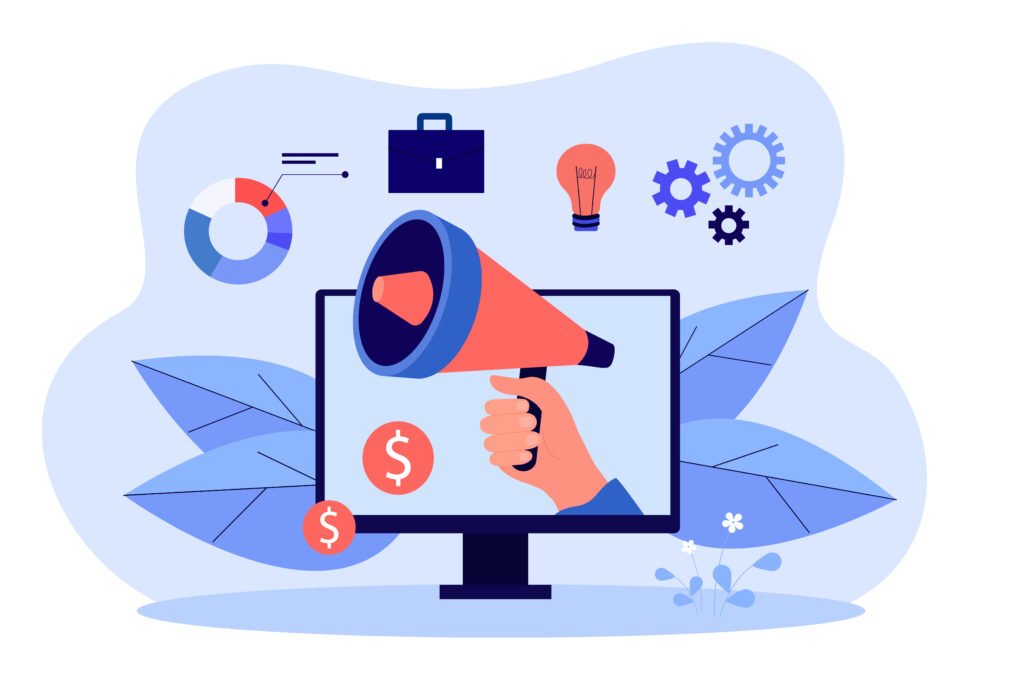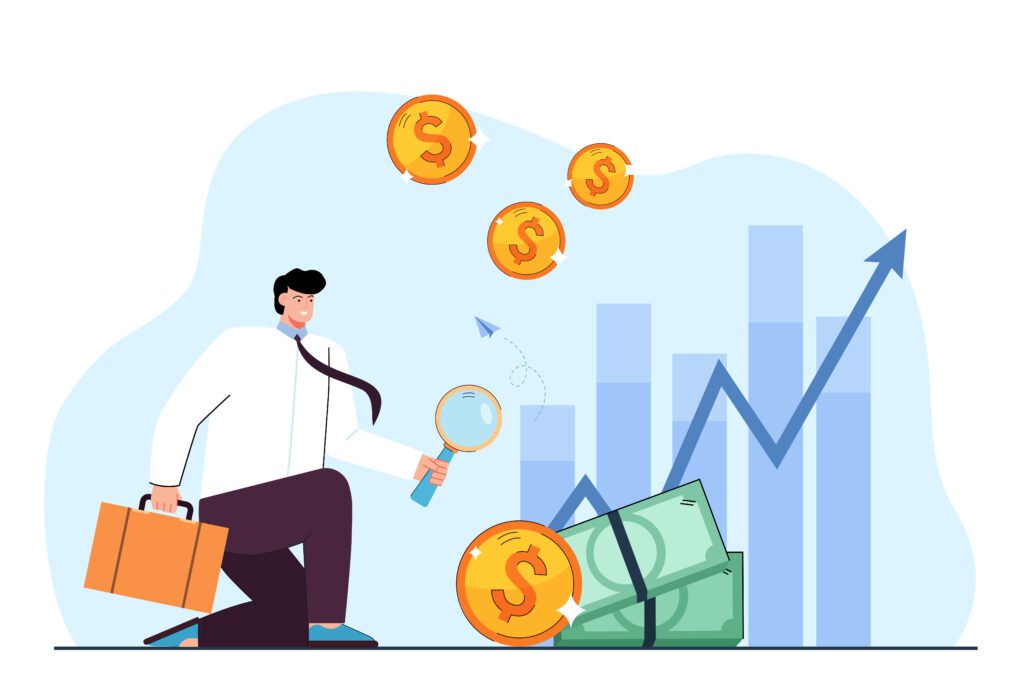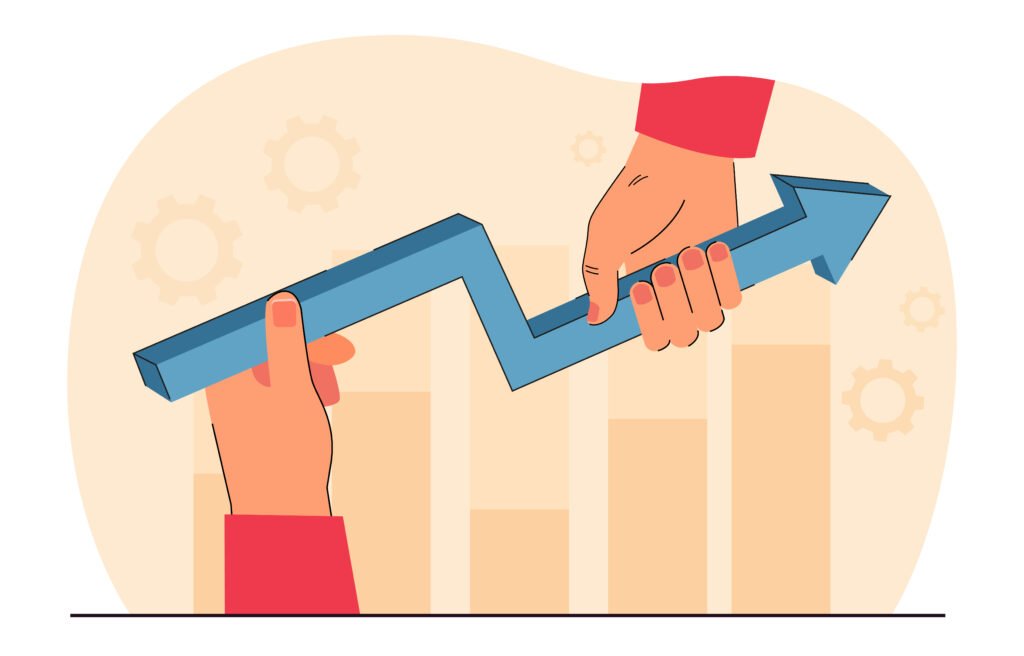Big Data Impact: Transforming Industries and Shaping the Future
10 Oct 2023
Ilya Lashch

Our digital everyday life generates ever-increasing amounts of data and visible new business models. To use the resulting data, companies are using new analysis techniques currently on everyone’s lips under the name “Big Data.”
Big data is currently considered one of the digital trends in the IT industry and is the subject of controversial debate. It has a transformative impact on various industries because it allows businesses to gain deeper insights, optimize processes, and make more informed decisions. But can we predict the full extent of the impact, potential, and challenges of big data analytics in the coming years?
In this article, we’ll explore big data’s definition, characteristics, innovation potential in various industries like Fintech, Healthcare, and Marketing, and its role in shaping future trends and approaches.
Understanding Big Data: The Three V’s
Before big data emerged, analysts only stored structured data, but the amount and types of data collected increased dramatically over time. Data became increasingly unstructured and could no longer be processed by transactional databases or analyzed using traditional tools.
This new, larger, and more diverse amount of data is referred to as “big data” and now states for the present and future of data and data analysis.
Big data collects data from different sources, so it is very diverse. They can include anything from simple numbers to multimedia content, which all need to be analyzed together. Why? The more data you analyze, the more information you get, and the better you can make informed decisions. This can help a company more accurately predict the results of future decisions and avoid losses.
To analyze the data, it must be saved. Since traditional databases could not meet these requirements, new technologies were needed. Non-relational databases, or NoSQLs, were developed for this purpose.
The Three V’s of Big Data
Big data refers to extremely large and complex sets of data that traditional data processing techniques are inadequate to handle. It possesses three essential characteristics:
Volume
Volume refers to the sheer amount of data generated and collected. Big data involves data sets that are too large to be processed using conventional methods.
For example, social media platforms like Facebook collect immense volumes of user-generated content, including text, images, and videos, totaling petabytes of data daily.
Velocity
Velocity represents the speed at which data is generated, collected, and processed. Big data often involves real-time analytics or near-real-time data streams.
An example is the stock market, where millions of transactions occur within seconds, and traders need to analyze this data quickly to make informed decisions.
Variety
Variety refers to the diverse types and formats of data in big data sets. This can include structured data (e.g., databases), unstructured data (e.g., social media posts), and semi-structured data (e.g., XML or JSON files).
Healthcare data includes patient records, diagnostic images (unstructured), and medical sensor data (semi-structured).
The Digital Revolution in Healthcare
The ongoing big data revolutionizing business transforms how healthcare providers operate, helping them make informed decisions about personal and public health.
There are many examples of big data in the healthcare industry: human genomic data, data in hospital information systems, cancer registries, clinical trials, medical sensor data, imaging data, acoustic and ultrasound data, and medical publications. Researchers are now intelligently linking these different data sources to draw conclusions that can advance medical research and improve disease treatment.
In particular, they analyze various data pots stored in silos and use modern methods such as deep machine learning and neural networks to search for cross-connections or detect suspected cross-connections.
Big data insights provide better opportunities to recognize individual constitutions and treat illnesses appropriately, i.e., practice personalized medicine. Let’s examine the healthcare advancements with the power of big data.
| Industry areas | Before | After |
| Diagnosis and treatment | Physicians relied on limited patient data and general guidelines. | Big data allows for personalized diagnoses and treatment plans based on extensive patient data and predictive analytics. |
| Drug discovery | Drug development was slow and costly, with a high failure rate. | Big data accelerates drug discovery by analyzing genetic, clinical, and molecular data to identify potential drug candidates more efficiently. |
| Patient monitoring | Patients were mainly monitored during hospital visits. | Big data enables continuous remote monitoring through wearable devices, improving disease management and early intervention. |
| Healthcare costs | Healthcare costs were rising without clear insights into spending patterns. | Big data helps identify cost-saving opportunities by analyzing billing data, optimizing resource allocation, and reducing waste. |
| Genomic medicine | Genomic data analysis was slow and expensive. | Big data enables rapid genomic analysis, leading to personalized treatment plans based on genetic information. |
Predictive analytics have futuristic possibilities to identify health trends and prevent outbreaks by analyzing vast datasets, capable of detecting patterns and early warning signs of diseases. This allows public health officials to take proactive measures, allocate resources optimally, and implement targeted interventions to mitigate the spread of diseases and protect communities.
Unleashing Financial Insights: Big Data in Finance
The financial industry is one of the most regulated industries in the world, managing and analyzing large amounts of data to make business decisions.
Data-centric innovations support fintechs, neobanks, and banks in combating fraud, analyzing risks, optimizing processes, and personalizing customer offers. The central areas of application include:

Risk assessment
Banks use data-driven insights to assess credit risk. They analyze a customer’s credit history, income, and other data points to determine the likelihood of repayment. For instance, based on historical credit data, FICO credit scores help lenders assess borrowers’ creditworthiness, reducing the risk of defaults and improving lending decisions.
Fraud detection
Financial institutions employ data analytics to detect fraudulent transactions in real time. They analyze transaction patterns and anomalies to flag potentially fraudulent activity. For instance, if a customer’s credit card is suddenly used for large purchases in a foreign country, the system may trigger an alert for potential fraud, allowing the bank to contact the customer and verify the transaction’s legitimacy.
Customer experience
Chatbots and virtual assistants in online banking use the power of big data to enhance the customer experience. These systems can provide personalized recommendations and assist with common tasks by analyzing customer interactions and transaction history. For example, a virtual assistant might suggest suitable investment options or help customers track their spending habits, leading to a more tailored and user-friendly banking experience.
Algorithms and machine learning are crucial in making reliable market predictions and optimizing investment strategies by analyzing historical and real-time market data to identify patterns, correlations, and anomalies.
Data analysis could be integrated as the project progresses, and the improvements impacting the project could be tracked through predetermined measures. You can request a consultation from a bespoke software development company to make a data-driven transformation.
Marketing in the Digital Era: Big Data’s Influence
An early example of using big data consumer analytics came from the Target supermarket chain in 2012. The company could determine whether a consumer was pregnant and make appropriate offers thanks to collected customer data.
This example made waves then but has since been almost forgotten during marketing evolution. This may be due, among other things, to the fact that such examples of forward-looking marketing cause multiple industry disruptions and become the norm.
Check out a comparison of how big data contributed to the evolving landscapes of marketing.
| Industry areas | Before | After |
| Consumer behavior analysis | Consumer behavior analysis relied on limited demographic data and surveys, offering a narrow view of preferences. | Big data enables comprehensive consumer behavior analysis by incorporating vast datasets, including online interactions, purchase history, and social media activity, providing a more accurate understanding of consumer preferences. |
| Personalized marketing | Marketing campaigns often use one-size-fits-all approaches, resulting in less relevance to individuals. | Big data facilitates personalized marketing by analyzing customer data to tailor messages and promotions, enhancing engagement and conversion rates. |
| Targeted advertising | Advertising relied on general audience segments, leading to less efficient ad spend. | Big data-driven advertising allows for precise targeting based on consumer behavior, interests, and demographics, optimizing ad campaigns and improving ROI. |
| Predictive analytics | Predicting consumer behavior was largely speculative, leading to inconsistent results. | Big data and predictive analytics can accurately forecast consumer behavior, unveiling opportunities for trend anticipation. |
It is important to mention that many people have data privacy concerns in consumer data collection. The widespread use of data analytics and profiling can potentially lead to invasive surveillance, data breaches, and the misuse of personal information, eroding individuals’ privacy rights. Therefore, businesses must support thorough transparency and ethical data use regarding this question.
Discover our cutting-edge big data analytics services if you want to harness the predictive power and continuously gain actionable insights for your business’ success.
Shaping Business Strategies With Predictive Analytics
In both 2021 and 2022, just 7% of organizations achieved insights-driven maturity, while approximately 48% relied on quantitative analysis for decision-making, showing minor fluctuations over the past two years. As such, there are a lot of expectations for 2023 and the not-so-distant 2024.
Analyzing historical and real-time data can inform strategic decision-making and improve business operational efficiency. Let’s look at examples of companies leveraging big data to anticipate market trends and gain a competitive edge.
- Amazon
Amazon analyzes vast amounts of customer data, including purchase history, browsing behavior, and even customer reviews, to predict trends in consumer preferences. This data-driven approach enables them to recommend products, optimize their supply chain, and develop new products that cater to emerging trends, giving them a significant advantage in the e-commerce industry.
- Netflix
Netflix leverages big data to personalize content recommendations for its subscribers. By analyzing viewing habits, ratings, and demographic information, Netflix can suggest movies and TV shows that match individual preferences, keeping viewers engaged and reducing churn. Additionally, they use data to inform their content creation decisions, such as producing original series and movies based on analyzing what genres and themes are popular among their audience.
- Uber
Uber uses big data to optimize its ride-sharing service and gain a competitive edge in the transportation industry. They collect real-time data from drivers and riders, including location, traffic conditions, and ride history, to determine pricing, predict demand, and improve driver and rider experiences. This data-driven approach allows Uber to offer competitive prices, reduce wait times, and enhance their service’s overall efficiency and reliability, giving them an edge over traditional taxi services.
These companies demonstrate how effectively harnessing big data can lead to a better understanding of customer needs, more efficient operations, and a competitive advantage in their respective industries.
Innovation and Opportunities: The Data-Enabled Future
The big data revolutionizing business has become a driving force behind innovation, efficiency, and growth. Here’s a concise overview of the emerging trends and key developments, highlighting the big data’s potential:

Edge computing and IoT: The proliferation of IoT devices generates massive data at the network’s edge. Edge computing processes data closer to the source, enabling strategic insights for decision-making, predictive maintenance, and automation.
Deep learning: Deep learning already caused the data analytics revolution by extracting insights from vast data, enhancing decision-making, personalizing experiences, and creating intelligent systems.
Blockchain: Blockchain ensures secure data management, transparency, and trust in data transactions, offering opportunities for trusted data ecosystems, secure collaborations, and data integrity.
Privacy-preserving techniques: Differential privacy, federated learning, and homomorphic encryption protect individual privacy while enabling data analysis, fostering collaborations, and ensuring compliance with privacy regulations.
Data visualization and explainable AI: Data visualization aids in understanding complex datasets, while explainable AI provides transparency in AI-driven insights, improving decision-making and user engagement.
These trends empower organizations to harness big data’s potential for innovation, competitiveness, and value creation in the digital age.
Conclusion
It is expected to generate around 120 zettabytes of data in 2023, and the speed of this process is increasing from year to year. Not surprisingly, how giant is the influence of big data technologies on many industries, and the abovementioned technological advancements are just the tip of the iceberg.
Consequently, an awareness of the strategic value of data has already become established in large parts of the corporate world. Anyone who successfully analyzes the enormous data material concerning initially hidden patterns and relationships is often one step ahead of their competitors.
Contact Lightpoint’s expert today to discover limitless possibilities of big data for your company.


